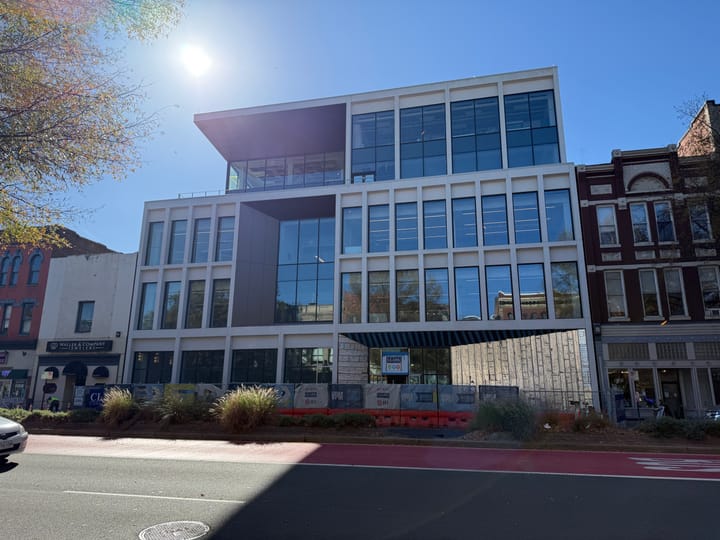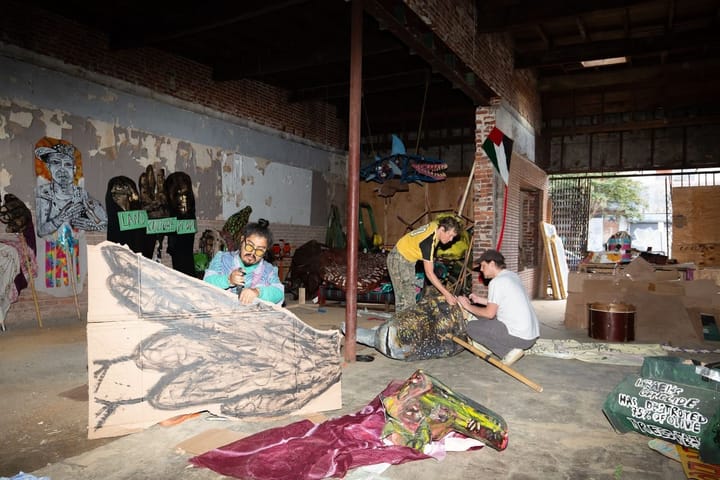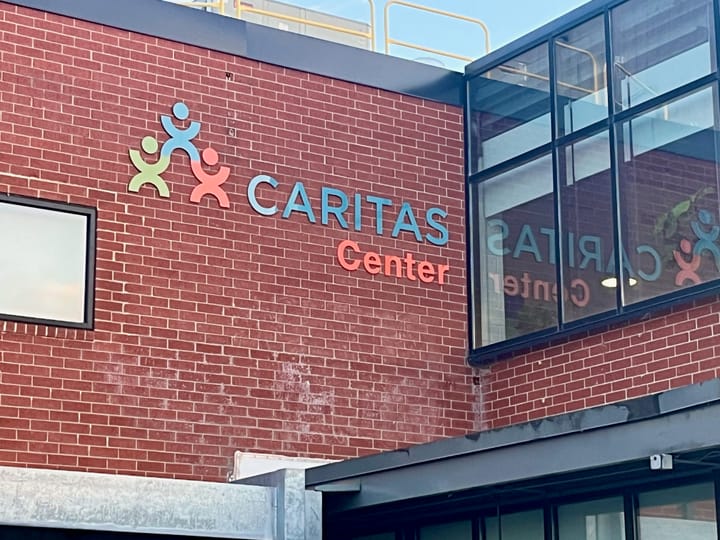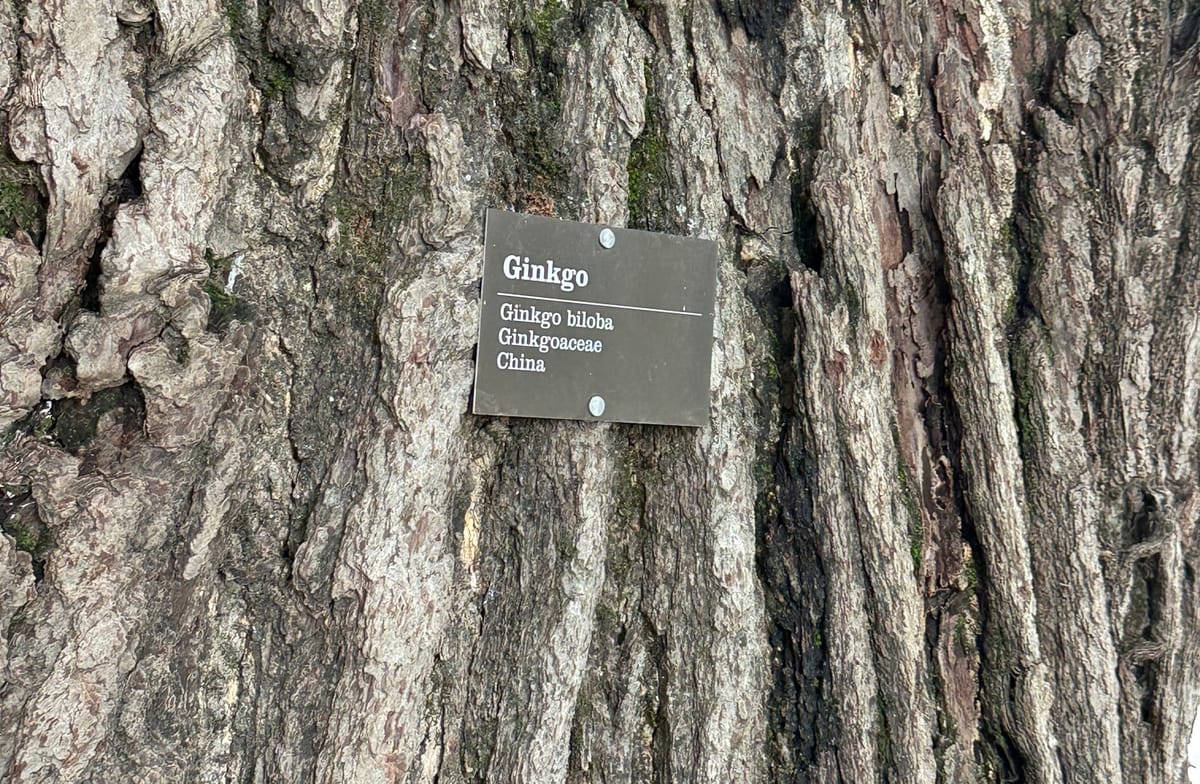
Exploring Richmond: Meet 5 of the city's most unique trees
They’re well known for being the “lungs of the earth,” providing shelter for wildlife and possessing extraordinary natural beauty, but trees are also time travelers and living museums.
Richmond is home to many of these overlooked storytellers with tales that keep the memory of someone alive or perhaps remind us that some history isn’t as ancient and faded into obscurity as one might think. Below are a few of the area’s notable trees whose stories are worth knowing.
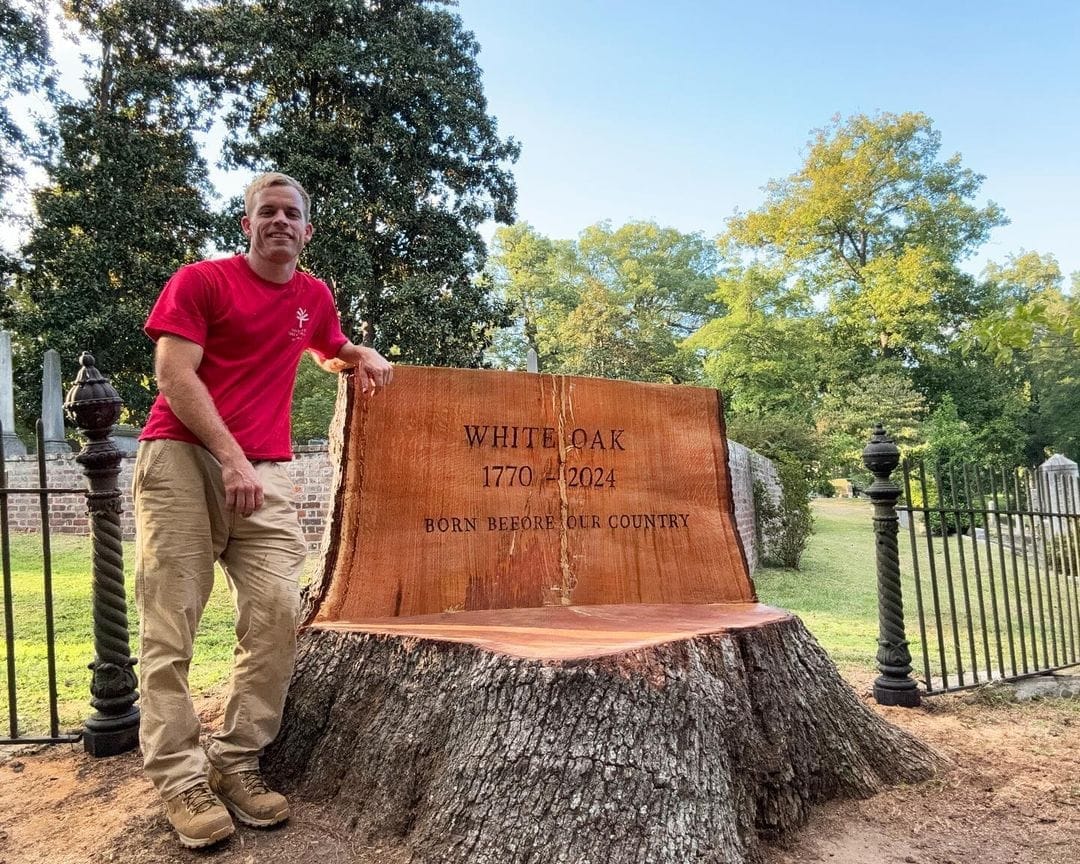
Hollywood Cemetery’s White Oak Gravestone
Most trees don’t get a gravestone, but a historic Richmond white oak does.
The 254-year-old tree at Hollywood Cemetery was forever memorialized on September 11, 2024 with a custom “headstone” carved out of its stump.
Crafted by Jake Van Yahres, co-owner of Van Yahres Tree Company, it’s inscribed “White oak, 1770-2024, born before our country” and can be found next to the Harvie plot which is situated along Westvale Avenue.
The family tree company has cared for the cemetery’s trees for over three decades, including this white oak which, despite efforts to revive it, officially bid farewell on July 31, 2024.
“I felt by this point a personal connection to it,” said Van Yahres. “Eventually, we had to take it down but I wanted to try to save it in some way.”
During removal it was discovered the tree had swallowed part of a surrounding iron fence, so the stump couldn’t fully be taken out; and after counting the rings Van Yahres found it to be over two centuries old. “That kind of sparked the idea of well there are all these headstones in Hollywood Cemetery commemorating people but never one of a tree,” he said.
The white oak was once part of a larger oak grove which, starting in the early 2000s, began to vanish due to consistent storm damage. “My hypothesis is that all those trees were connected by their roots,” said Van Yahres. “When the second-to-last one declined, that tree had lost its entire family.”
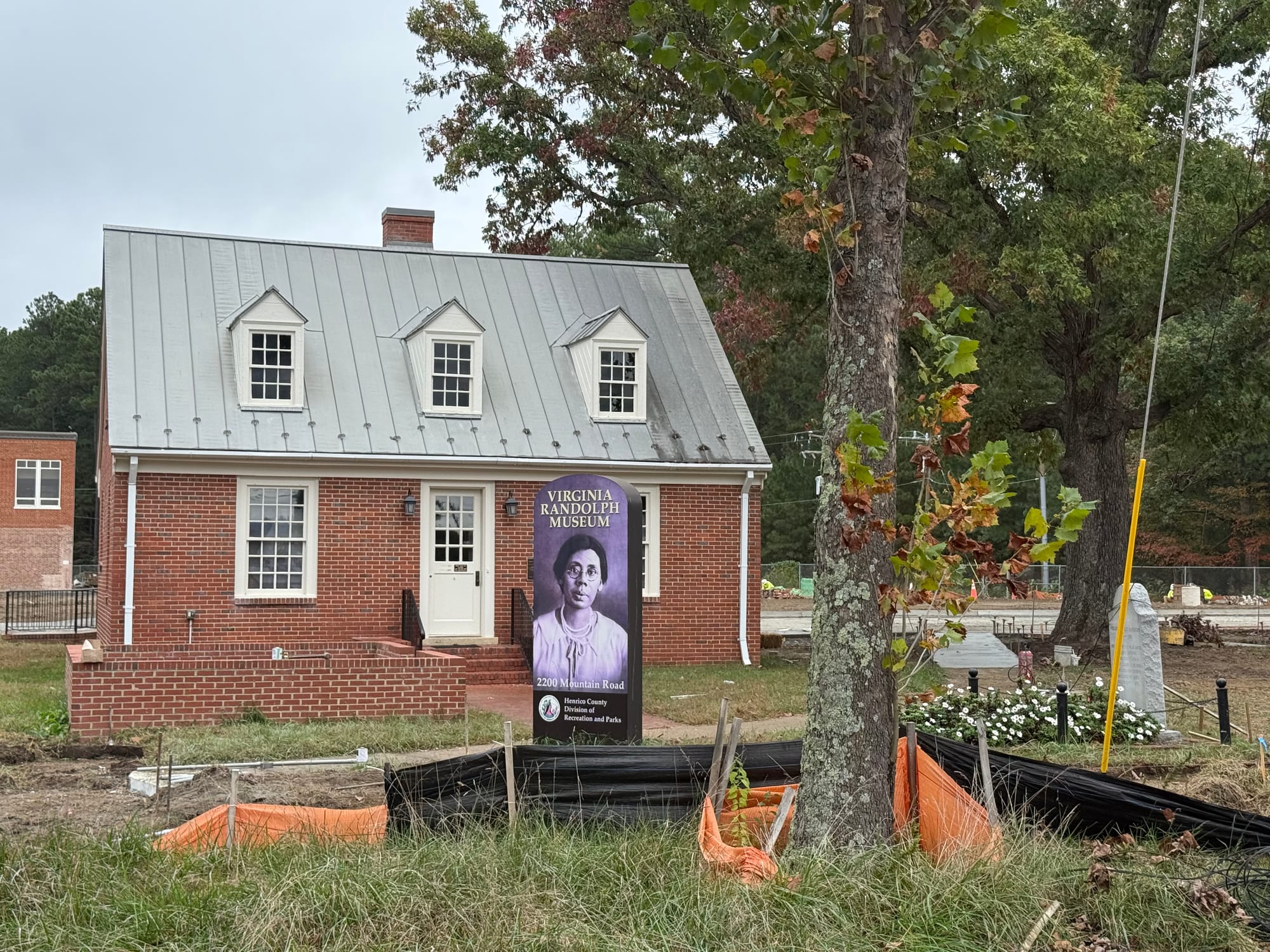
Virginia E. Randolph’s Sycamores
Over a century ago, Virginia E. Randolph, an iconic Henrico educator, planted 12 sycamores with her students in front of Mountain Road School — many of which still stand today and remind the world of her legacy.
Randolph, who developed the trailblazing Henrico Plan, purchased and planted these majestic trees on March 30, 1908 around the school (now the Virginia Randolph Museum) in celebration of Arbor Day. It wasn’t only the first of its kind at a school for Black students in the commonwealth, but in Henrico and Virginia.
Why she chose sycamores isn’t fully clear but it’s likely because they were Biblical symbols of abundance and prosperity.
“It's also quite telling that Ms. Randolph and her community would publicly tell the world that they planted 12 trees to represent the 12 apostles, thus forever linking the trees with Biblical principles,” said Julian Charity, Henrico’s division director of history, heritage and natural resources.
In the late ‘70s, the original sycamores were designated the first notable and historic trees in Virginia. While some of the initial sycamores have since been removed for modern advances, a few remain, although determining which ones they are is tricky as replacements have been planted over the years.
“One of the issues with knowing for sure is the process to find out. We would need to have a core sample of the trees done to verify, but fear that doing so would severely damage the trees,” said Charity. “Out of caution we have not done so yet.”
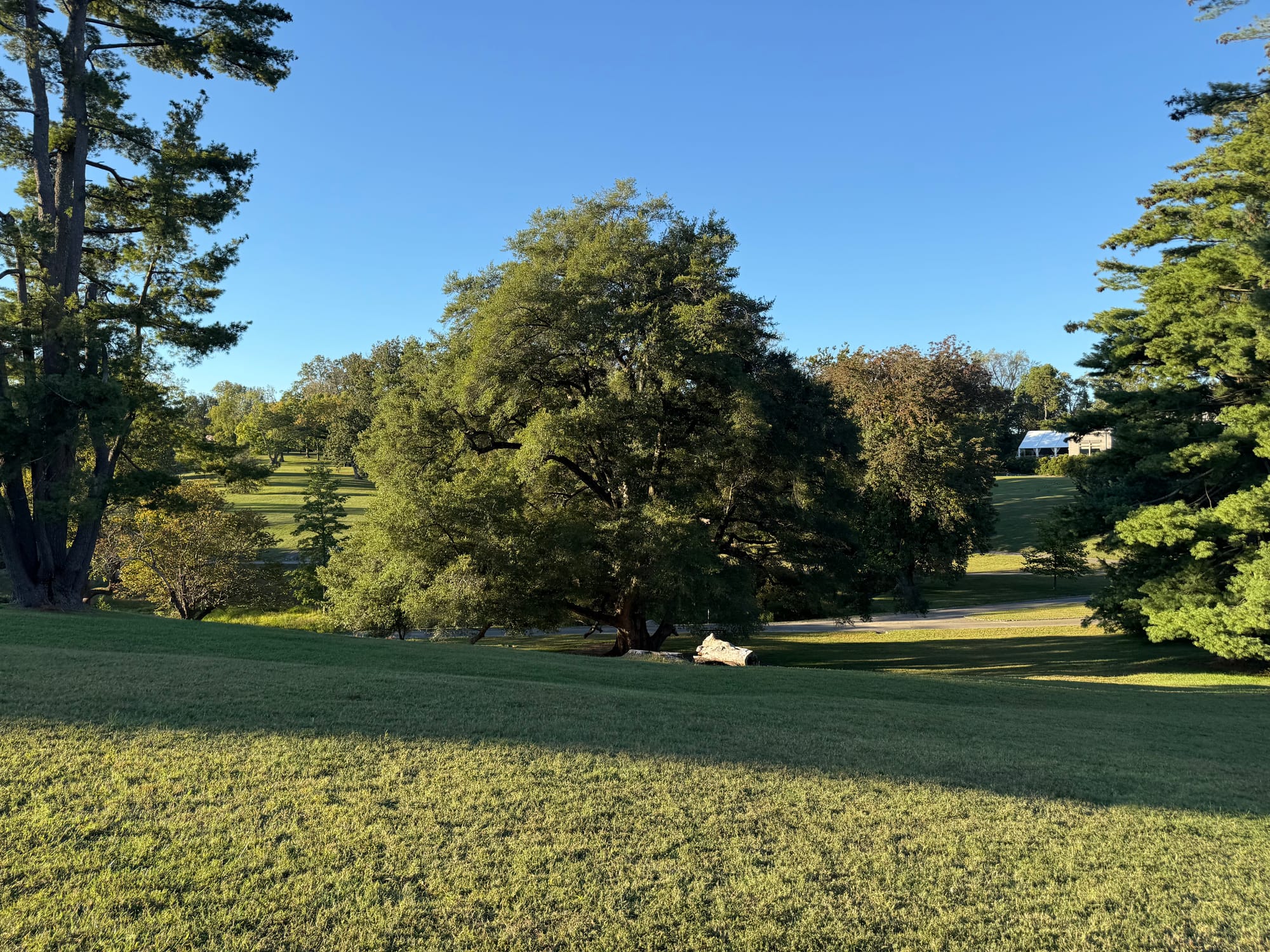
Maymont’s Darlington Oak
With its massive canopy and twisting branches, Maymont’s Darlington Oak is hard to miss.
“Its unique shape makes it kind of a rare example in Virginia of one of those majestic southern oaks,” said Sean Proietti, senior manager of horticulture and grounds.
Situated just below the mansion near the Robins Nature Center, the tree is estimated to be anywhere from 200 to 250 years old and has a 76-inch diameter and height of 74 feet, making this a national champion tree (the largest of its kind in the country).
The secret to its longevity and size? Perhaps the location. “It’s protected from prevailing winds by the slope of the hillside. It’s also fed by a natural spring,” said Proietti.
The tree is believed to be a remnant of the dairy farm the land once was before the Dooleys arrived. According to Maymont lore, you can still see a former cart road around its base.
And to celebrate its impressive life, a Darlington Oak seedling (grown from one of its acorns by the Virginia Department of Forestry) will be planted on the grounds next year on Arbor Day in honor of Maymont’s 100th anniversary as a public space.
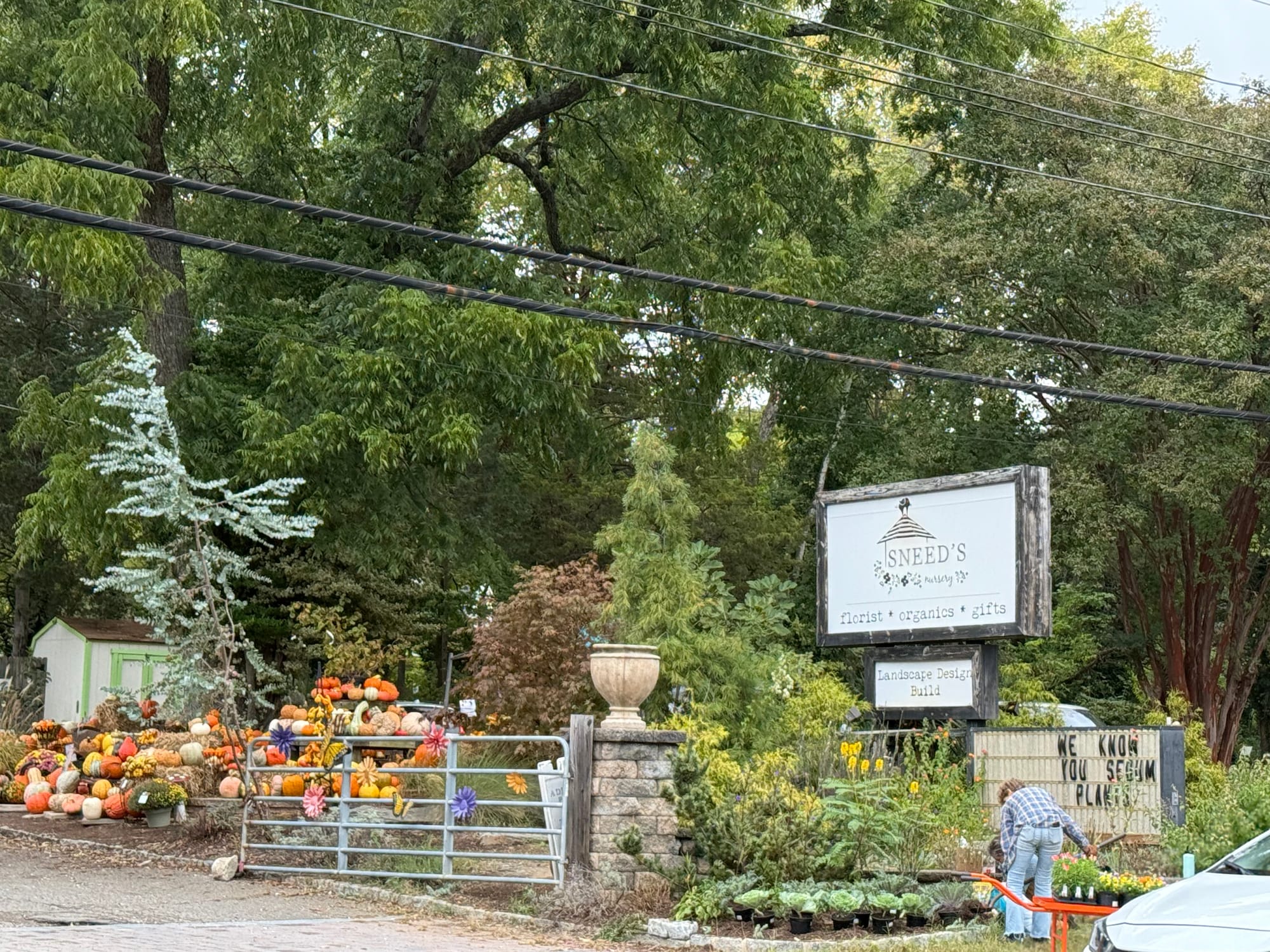
Sneed’s Nursery Dawn Redwood
For over 40 years a striking dawn redwood has watched over Sneed’s Nursery.
Planted in the early ‘80s by one of its landscape designers, the tall deciduous conifer flaunts feathery foliage and a red-tinged bark. While a showstopper any time of year, autumn is its prime.
“She takes on a copper glow that is absolutely magnificent against a clear blue sky,” said Jenny Jenkins-Rash, its operations manager. “That four-to-five-o’clock magic hour when everything glows in photos is the best time.”
This species (once thought to be extinct until the ‘40s) also has a special personal connection to Jenkins-Rash, who in 1999 was tasked as the propagation intern at Philadelphia's Morris Arboretum with collecting seeds from its first-generation Metasequoias and growing them as donor gifts.
“I grew over 200 babies,” said Jenkins-Rash. “When I came to work here five years later, it seemed appropriate that it is the defining tree at Sneed’s.”
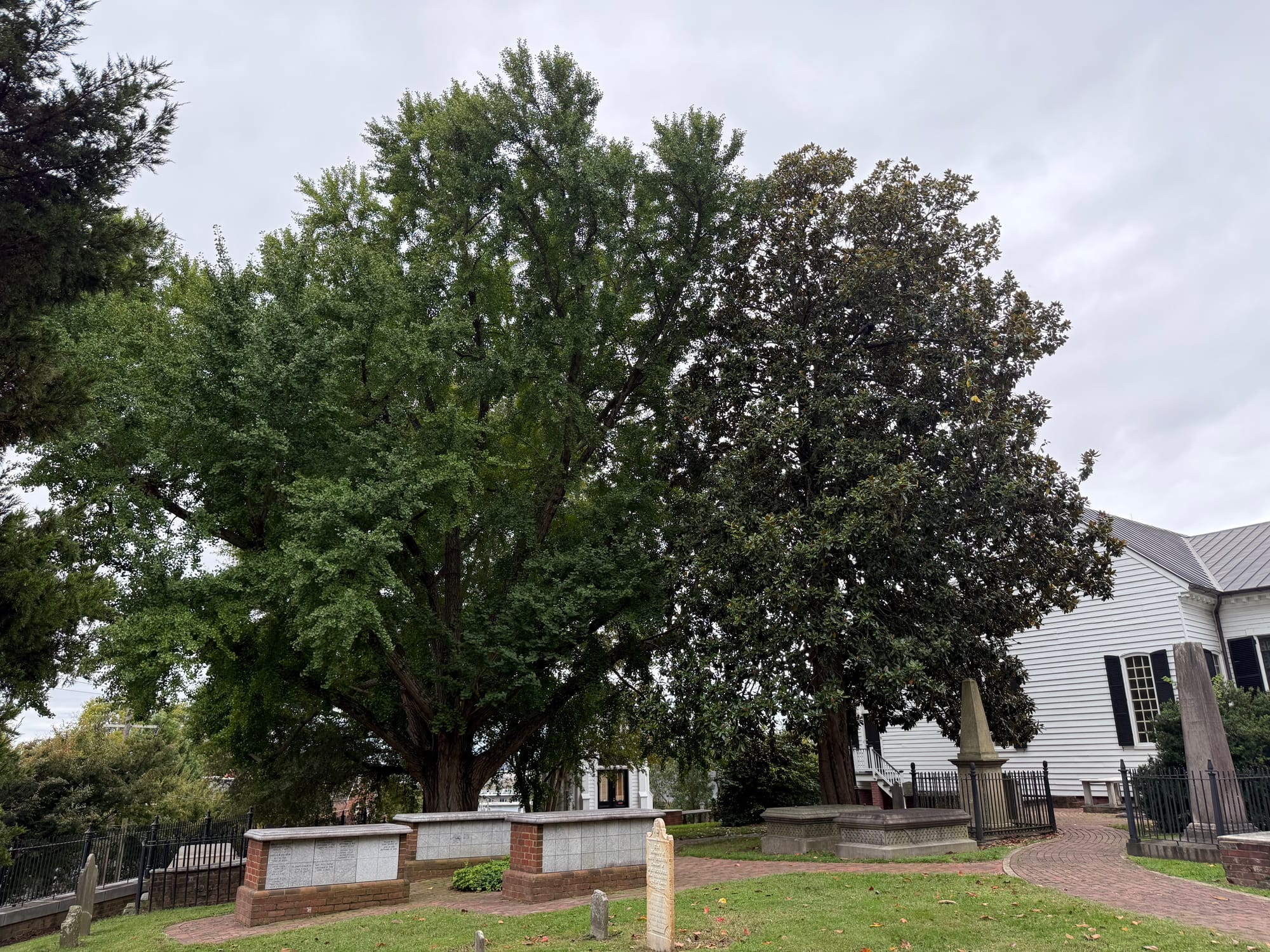
Church Hill’s Mysterious Ginkgos
Who can resist a radiant golden ginkgo in the autumn? In Church Hill, there's an opportunity to enjoy such a spectacle at Patrick Henry’s Pub & Grille and St. John’s Church.
These spots are home to huge ginkgos — one of the earth’s oldest living tree species. St. John’s features two — one on the east side by North 25th Street and the other near the gift shop. While little is known about their origins, maps from 1944 indicate their presence, but it’s agreed they’re older than that. With St. John’s being 284 years old, the ginkgos could very well be relics of the Revolutionary Era.
At nearby Patrick Henry’s Pub & Grille, a ginkgo shades the patio. As with St. John’s, much remains unclear about the impressive tree’s past and age, but there are thoughts it might somehow be linked to the church’s ginkgos.
Despite their mysterious lives, one thing’s for sure — these ginkgos are city marvels worth viewing, whether to ponder their past or to just admire their glamour.
The Richmonder is powered by your donations. For just $9.99 a month, you can join the 1,200+ donors who are keeping quality local news alive in Richmond.
This article has been updated to correct a typo.


